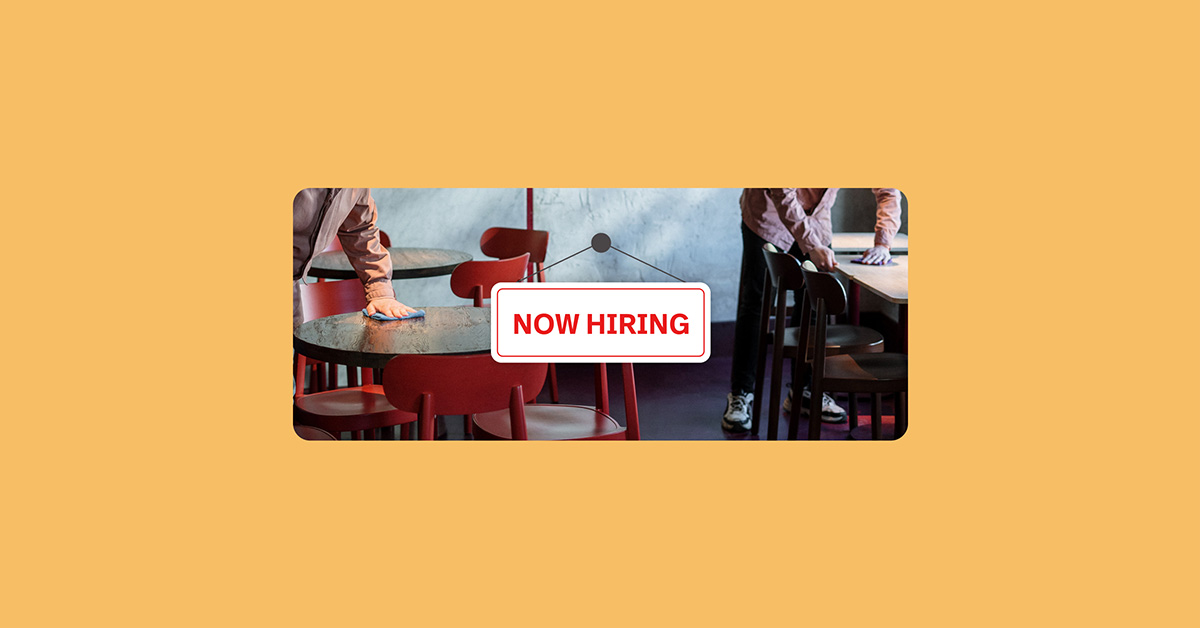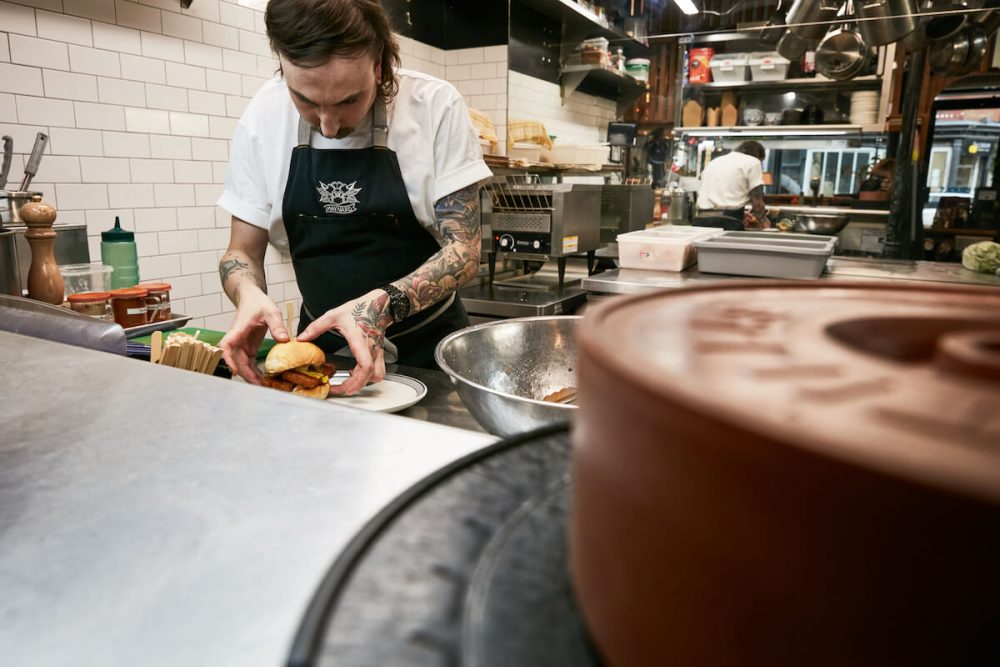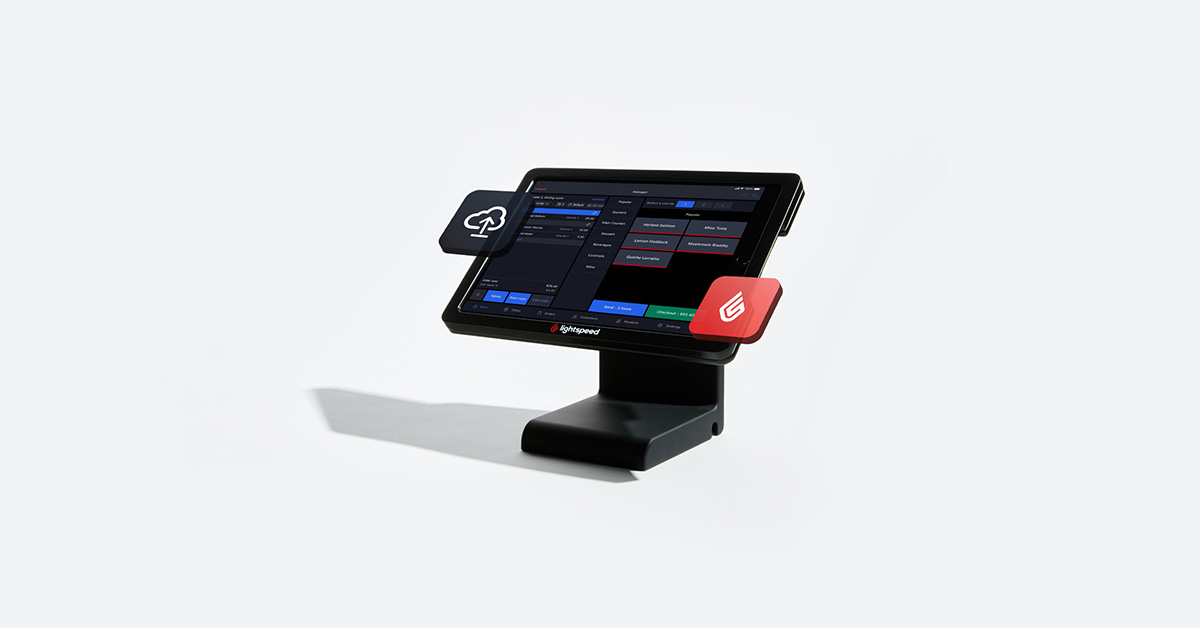
When you’re running a food service business, employee turnover and temporary restaurant staffing is something you’re going to need to effectively manage—and that comes with a unique set of challenges.
The way you approach finding, interviewing, hiring and training temporary restaurant workers will determine the quality of your applicants and whether or not they’re successful in their role. Use this guide to ensure that your temporary restaurant staffing hires are a good fit for your business and that they have a positive experience during their time with you.
In this article we’ll cover:
- Restaurant staffing statistics
- The pros and cons of hiring temporary restaurant staff
- How to attract great candidates
- How to screen candidates
- What to do before extending an offer
- Training temporary staff members
Empower your staff with the tools they need to give personalized, efficient service to each guest. Service at full speed
Restaurant staffing statistics
Restaurant staffing and turnover has always been a challenge, but now that the foodservice industry is bouncing back after COVID-19, it’s become even more challenging. Take a look at these troubling stats:
- Even after settling down from an all-time high of 130.7% in 2020, the restaurant industry turnover rate is still shockingly high, hovering around 94%.
- Losing a front-line employee costs an average of $5,864 in direct and indirect costs. The cost of losing a management-level employee is about three times that.
- 62% of all operators in the foodservice industry say that their current staffing levels are below normal and that training staff is a top challenge.
By the look of it, owners and operators will continue to struggle with restaurant staffing needs for front-of-house, kitchen and management staff. The good news is, hiring for temporary restaurant jobs may be able provide some relief from restaurant recruiting and staffing challenges.
Want to learn more about turnover rates and how to calculate yours? Take a look at this resource.
Pros and cons of hiring temporary restaurant staff
As the name suggests, temporary restaurant staffing refers to hiring restaurant employees on a short-term basis. In hospitality, temporary workers are typically brought in to support permanent staff during peak seasons, cover for staff absences, or to provide extra hands at special events. For example, a ski lodge who needs to hire extra staff for peak winter months, or a restaurant that needs to cover a permanent employee who is injured or needs time off work to deal with a family emergency.
Of course, as with all things in life, there are pros and cons to temporary restaurant staffing.
Pros of temporary restaurant staffing include
- Access to a flexible labor pool that can be tapped into as needed
- No requirement to offer expensive perks like paid time off or health benefits to temporary workers
- Option to outsource temporary restaurant staffing needs to a restaurant recruiting agency (a good option for last-minute and short-term staffing needs)
Cons of temporary restaurant staffing include
- Temporary workers may not demonstrate the same level of care and attention to your guests as a permanent employee
- You may end up paying high fees to a restaurant recruiting agency
- Temporary workers still need training on your workflows and procedures
Training temporary staff can feel like a particularly heavy burden when you’re already in the weeds. This becomes even more frustrating when your restaurant POS isn’t optimized for your workflows or integrated with your payments system.
An easy-to-use and intuitive POS and payments system makes a huge difference when it comes to getting restaurant staff trained and ready for service. Just ask Brodie Somerville—owner and head chef at Maynard in Montreal’s trendy Plateau neighborhood—who saves more than two hours a day with Lightspeed’s integrated payments and out-of-the-box delivery integrations.
“The whole staff finds [Lightspeed] super easy to use. Everyone loves it. And because it’s very simple and very intuitive, it’s very easy to teach. I can get staff trained on how to use the system in, like, 20 minutes.” — Brodie Somerville, Restaurateur and Chef, Maynard

Find out how other users have leveled up their training and operations with Lightspeed Restaurant.
How to attract great restaurant candidates
Before we cover how to determine whether or not a candidate is a good fit during the interview, let’s cover how to attract great candidates.
The general rule for hiring temp restaurant staffing is to not start your search too far in advance. Candidates for temporary roles see the role for what it is: temporary. They aren’t heavily invested and won’t be looking for temporary roles months in advance. Start your search no earlier than a couple of months before you need the role filled.
Write a killer job ad
You need to draft a compelling job ad to attract the best possible candidates for your temporary positions. Once you have a decent pool of prospects, you can filter through them and determine which ones will make it to the interview phase.
A good job description should be two things: honest and accurate. Ensure that the job description effectively communicates the role’s responsibilities and the duration of the contract. It should be clear enough that potential candidates know what to expect, but not too long. Here are the basic things you should include in your job ad:
- A few sentences that describe your establishment, highlighting what makes it unique
- No more than four sentences describing the role
- A list (bullet points are easier to scan) of the role’s day-to-day responsibilities
- A list of the required qualifications and bonus skills
- A link or email address where the candidate can send their resume
- Be clear and honest with your job description. This helps candidates make an informed decision, which ultimately increases your pool of serious potential hires.
Be sure to mention if there’s an opportunity to be hired in a full-time role after the contract expires. Great candidates may see a temporary role as a gateway to a permanent position.
Post your job ad
Next, post your job ad on relevant sites. We suggest starting with these:
If your restaurant is on social media—and it really should be—why not publish a post or story to let your followers know you’re hiring. They’re your biggest fans and might be interested or know someone who’s interested. Make sure your posts can easily be shared and let your followers spread the word for you.
Ask for referrals from your employees
Good employees know other good employees. As part of your temporary restaurant staffing strategy, don’t forget to ask your employees if they know people that are qualified and might be interested.
How to screen your temporary restaurant staffing candidates
Posting the ad for your temporary restaurant job is just the first step. The next step is screening your candidates. To find a candidate that’s both competent and a strong cultural fit, you need to formulate a game plan and listen to your intuition.
Look through resumes and applications for relevant work experience and any extracurricular mentions that give you an idea of what kind of person they are. Once you’ve got a list of potential candidates, it’s time to move to the interview process.
Cater your interview to the role you’re hiring for
The personality traits and skills needed vary from role to role in the restaurant industry. Whether you’re hiring a chef, bartender, server, host or manager, you should structure your interview so that you get a clear idea of how the candidate will perform in that role.
For example, servers typically need to be outgoing, strong multitaskers and able to work under pressure with a smile. Ray Camillo, CEO and Founder of Blue Orbit Restaurant Consulting, suggests putting a potential candidate for a server role through a timed assembly test.
“Replicate Friday night pressure and see whether or not they handle it gracefully,” Camillo says. “If they get flustered or frustrated, there’s a chance they can’t handle the role. If they take the pressure in stride and stay positive, they could be a fit.”
Once you think you’ve found the right person, do your due diligence and run a background check. Ask for a few referrals from previous employers to get an idea of how they performed in past roles. If everything checks out, you may have just found your ideal candidate!
Things to do before extending an offer
Figure out the legalities
Each country has its own unique rules, regulations, and laws for restaurant staffing. If you’re not too sure of those requirements, do your research and also check out these resources:
- USA labor laws and issues
- United States Department of Labor Wage and Hour Division
- Major laws of the United States Department of Labor
- Canadian federal labor standards
- Canada’s Labor Standards and Regulations
Determine salary
Pinpoint a salary that’s competitive and that you can afford. Consider:
- What are other restaurants in your region and category paying employees in similar roles?
- What is the tipping structure in your restaurant? Will temporary workers be eligible for tip outs on shifts they worked?
- What other benefits or perks could you offer to enhance your offer?
It’s important to offer a wage that’s competitive with what others are offering to maximize how many qualified candidates you attract.
Don’t forget, if you’re using a restaurant staffing agency, you’ll need to consider the agency’s service fees when deciding on the maximum rate you’re able to offer for temporary workers.
Training your temporary restaurant staffing hires
After you’ve extended your offer and the candidate accepts, you need to train them and teach them everything they need to know to be successful in the role. Here are a couple of things to consider:
1. Education and training materials
When it comes to general information about your restaurant, your menu and guidelines, a short pamphlet or cheat sheet that your short-term employees can take home and study is a great tool. This will enable you to standardize staff training and brand messaging. We recommend that you include the following:
- Restaurant facts: the type of food you serve, your busiest hours, most popular menu items, most profitable menu items, how and where your food is sourced, as well as the head chef and owner’s information. This helps your staff create a narrative around your restaurant that they can use when serving guests.
- Operational instructions: this is where you can explain how the front and back of house communicate and work together, as well as the roles and responsibilities of each team member. This helps new hires know who to refer to when they need something.
2. Demonstration and shadowing
Having one of your top-performing staff members show temporary employees how things are done can go a long way. Assign temporary workers to shadow one of your full-time hires so they can see how things are done and how they work.
Your establishment’s point of sale (POS), payment terminals, and kitchen display system (KDS) are at the heart of your operations, so it’s likely your newcomers will need a crash course in how to use them. For example:
- For hosts, consider showing them how to check in a guest that made a reservation and how to pinpoint where they’re sitting in your floor plan. Additionally, show them how to adjust the floor plan to accommodate last-minute walk-ins and reservations.
- For servers, show them how to input orders and fire them to the appropriate workstation, check on a table’s status and process payments.
- For kitchen staff, teach them how to properly use the KDS. For example, Lightspeed’s KDS uses color codes to communicate the status of orders between the back and front of house. You’ll want to train new and temporary workers to update order statuses right away so that it becomes second nature. Watch this quick video to see what we mean.
One of the best parts about using a restaurant POS system like Lightspeed Restaurant is that it’s so easy to use that even temporary restaurant staffing hires can be up and running in no time.
Support your staff with intuitive, easy-to-use restaurant technology
Creating memorable dining experiences that wow guests starts with a customer-first approach, attention to detail and a positive attitude.
With Lightspeed’s restaurant POS and management system, you can view staff performance reports, offer tableside ordering, start a loyalty program and more. Chat with one of our restaurant experts to see how technology can help your staff work smarter, not harder.

News you care about. Tips you can use.
Everything your business needs to grow, delivered straight to your inbox.


